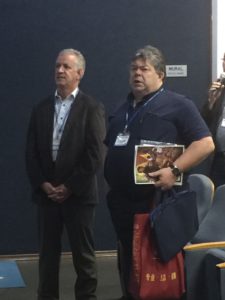 On April 19, 2017, in the afternoon, at the Santa Fe Center – Sao Paulo (Brazil) – 48 participants, from the Camillian religious and lay collaborators, met for the 3rd International Meeting of Camillian parish priests and rectors, representing fifteen nations and different provinces and delegations of the Order.
On April 19, 2017, in the afternoon, at the Santa Fe Center – Sao Paulo (Brazil) – 48 participants, from the Camillian religious and lay collaborators, met for the 3rd International Meeting of Camillian parish priests and rectors, representing fifteen nations and different provinces and delegations of the Order.
The theme of the gathering will be focused on the identity of the parish with a Camillian profile, that is, a Camillian parish as an ‘open hospital’, where one knows, loves and serves the poorest sick people through kononia (experience of communion), kerygma (announcement of the Word of Salvation), diakonia (charity service).
The provincial superior of Brazil, Fr. Antonio Mendes Freitas welcomed the participants on behalf of the confreres of the province and presenting the main aspects of the life and ministry of the Brazilian Camillians: health care commitment and promotion of public health through various hospital and clinic facilities; commitment to train and teach others to treat the sick with science, professionalism and conscience. There are other areas of the mission: Macapa, Fortaleza and Bolivia. These are the social areas characterized by extreme poverty from a health, educational, human point of view.
As to the venue of this meeting, Brazil was chosen since the Brazilian province, in the context of the Order, has responsibility to the largest number of parishes (10) and has already provided a statute with respect to the Camillian ministry in the parish, which becomes an important reference and guiding tool for the Camillian ministry in this area of ecclesial pastoral care. This document will be the instrumentum laboris in preparing the guidelines of parishes in our Order.
This third international gathering resumes the journey already undertaken with a very stimulating and topical theme: Camillian parishes, as place of communion (koinonia), of evangelization (kerigma) and of mission (diakonia). In addition to this reflection and deepening of this theme, the participants will have a precise and concrete task of elaborating a statute of the Camillian parish to propose and share it to the Order. To the similarity of our “socio-sanitary works and institutions”, for which in the year 2002 was formulated the identity document called Magna Charta, now is the time to think of such an identity certificate also for parishes entrusted to Ministry of the Camillians.
The Superior General Fr. Leocir Pessini welcomed the participants with a reflection on the context of this gathering. In our four centuries’ old history, hospitals have always been seen as a privileged and practically unique and exclusive setting for the exercise of our charism. The importance of parishes for Camillian ministry has been a recent acquisition, starting with the Second Vatican Council (1962-1965).
When speaking about the charism of the Order our Constitution observes: “Therefore, the charism which has been granted in a special way to our Order and which establishes its character and mandate, is expressed and realized in the works of mercy towards the sick. Nevertheless, the Order, in particular circumstances of time and place and in response to the more urgent needs of the Church, is open to other works, especially on behalf of those in need.” (Const., n. 10).
As regards our ministry, two important points are highlighted at the level of the interface between our charism, ministry and parishes, specifically in numbers 54 and 57 of our Constitution: ‘Our Order is also keenly sensitive to the pastoral care of ecclesiastical and civil institutions involved in the care of the sick and the poor, and is dedicated to animating the greatest number of lay people in loving and serving the sick’ (Const., n. 54).
Our work is a part of the whole apostolic activity of the universal and local Churches. “Therefore, in the exercise of our ministry, we cooperate with the local Ordinary, following his pastoral directives, and foster coordination and collaboration with other religious institutes, with the diocesan clergy, with the laity and with apostolic associations.” (Const., n. 57).
‘Parishes which are erected with the consent of the General Consulta (C 10), should give special attention to the care of the sick (GS, n. 35).
 The final document of the fifty-sixth General Chapter of the Order (Ariccia-Rome, 2007), whose theme was United for Justice and Solidarity in the World of Health, when presenting some guidelines for action of the Order in relation to our charism and spirituality expressed itself in the following way in relation to parishes: “Where this is necessary and the Order takes responsibility for parishes, it should give them a typically Camillian countenance, seeing them as ‘open hospitals’ in which the poor and the sick deserve first place, in particular home care which St. Camillus saw as ‘the great ocean’ of charity, so that parishes become centres for the promotion and pastoral animation of health.”
The final document of the fifty-sixth General Chapter of the Order (Ariccia-Rome, 2007), whose theme was United for Justice and Solidarity in the World of Health, when presenting some guidelines for action of the Order in relation to our charism and spirituality expressed itself in the following way in relation to parishes: “Where this is necessary and the Order takes responsibility for parishes, it should give them a typically Camillian countenance, seeing them as ‘open hospitals’ in which the poor and the sick deserve first place, in particular home care which St. Camillus saw as ‘the great ocean’ of charity, so that parishes become centres for the promotion and pastoral animation of health.”
The 57th General Chapter (Ariccia-Rome, 3-17 May 2013) had as its basic theme Towards a Faithful and Creative Life and approved The Camillian Project: Towards a Faithful and Creative Life. Challenges and Opportunities. This project, which constitutes the programme of the general government of the Order for the six-year period 2014-2020, in its guidelines for ministry when referring to parishes expressed itself as follows: ‘In Camillian Provinces where there are parishes ‘guidelines’ should be established for their ministry in order to offer them a Camillian countenance.”
Fr. Innocente Radrizzani arrived in Brazil from Italy, together with Fr. Eugenio Della Giacoma, in September 1922: they were Camillian religious of the then glorious Province of Lombardy and Veneto (now the Province of North Italy). Our Camillian presence in the city of San Paolo was accepted by the then Archbishop of San Paolo, Dom Duarte Leopoldo e Silva, on the condition that the Camillians took responsibility for service in a small chapel because of the shortage of local priests. Our ministry began in that chapel in November 1933. With the passing of time, it became the Parish of Our Lady of the Rosary in Villa Pompeia (1939) and its first parish priest was Fr. Giuseppe Simoni. This place is the cradle of the Camillians in Brazil. They subsequently also built a small school and clinic which later became the St. Camillus Polyclinic, today the important St. Camillus Hospital.
Fr. Innocente Radrizzani, with his firm determination and vision of the future, opened up this new ministerial horizon, overcoming the initial difficulties of the new mission. In a letter addressed to the Superior General Fr. Pio Holzer, dated 26 March 1926, he presented the proposal to create a new community in the city of Santos for service in hospitals and to officiate in a little church which – in his view – in the future would be transformed into a parish. “Parishes in Brazil are not as frightening as in Italy… Because of the grave shortage of local clergy, one has to meet the wishes of the bishops as one can. This is what all the religious do.”
It is interesting to observe that before the Second Vatican Council, taking into account the reality of the needs of the population, these first Camillian missionaries took responsibility for ministry in hospitals but also in parishes, with a pressing need for cooperation with the local Church. If Fr. Innocente had followed literally the general statutes and the Constitution of the Camillians which expressly prohibited any type of activity in a parish, it is very likely that today the Camillians would not exist in the Province of Brazil. One may speak here of a ‘responsible transgression’ in interpreting the spirit of the law of the Constitution, which only prophets and saints, ahead of their time, know how to accomplish with so much freedom and creativity.
The dentity and mission of Camillian parishes still remain a great missionary objective to be achieved and implemented through pastoral initiatives for the people of God. As a living and vivifying centre of evangelisation, a living a cell of the Church, a Camillian parish must pursue as a priority – in the context of all its activities involving evangelisation – the mandate of Jesus to preach the Gospel and heal the sick. The idea of a parish being an open hospital, which is held so dear in our Camillian tradition, and our Samaritan presence with sick people in their homes, which are our great ocean (mare magnum), legitimate our ministerial presence in this field of pastoral care of the Church.
The Superior General states that that we Camillians have still not learnt to work in synergy with lay people! Often they are seen as being on the same level as the usual employees of our institutions without there being any concern on our part to offer them adequate Christian, human, and also Camillian, formation! We run the risk of following the rules of a heartless market and the strategies of a ‘throwaway’ economy, as our dear Pope Francis has often denounced! Fortunately, to nourish our hope, we have some happy examples of this ministerial cooperation which will certainly be talked about at you international event. We are still very clericalised.
Our Constitution states that “using every suitable means of the apostolate, we dedicate ourselves to the ethical formation and Christian animation of health care workers, and we are a leaven of unity in their midst.” (Const. n. 52); and it goes on: “Our Order…is dedicated to animating the greatest number of lay people in loving and serving the sick.” (Const. 54). The ministry in our parishes, realms and shrines is an area of excellence in which we are called to work with lay people. It would be good to check and discuss what and how we are doing in this area.
The Camillians have the specific charism of promoting health and care for the sick and to this belongs, in historical terms, care for those people who are in a precarious condition and at the terminal stage of their lives. During the course of history, people have always seen us as the fathers of a good death. Therefore, we believe that it is fundamental to give a Camillian identity to those parishes, churches, rectories and sanctuaries that are entrusted to our pastoral care.
Of what does this identity consist? The Document of Aparecida (DA), which was drawn up in the year 2007, is the document that presents a programme for the whole of the Church of Latin America and the Caribbean. It was drawn up under the coordination of the Cardinal of Buenos Aires, Jorge Mario Bergoglio, today Pope Francis. “The maternity of the Church is expressed in visits to the sick in health-care centres, in providing silent company to the sick, in an affectionate approach, in delicate attention to the needs of illness by professionals and volunteers, disciples of the Lord. The Church welcomes with her tenderness, strengthens hearts, and in the case of death accompanies the dying during the final transit. The sick receive with love the word of the Lord, forgiveness, the sacrament of anointing of the sick, and the acts of charity of their brethren.” (DA, n. 420).
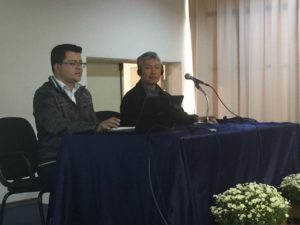 A Camillian religious who works in a parish rectory, church or sanctuary, above all in developing countries or poor countries, should give especial emphasis to pastoral care in health in its three aspects: at a supportive level, at a community level and at a political-institutional level, as was already pointed out to all the pastors of Latin America and the Caribbean in the document entitled ‘Missionary Disciples in the World of Health. A Guide for Pastoral Care in Health in Latin America and the Caribbean’ (CELAM, 2010). All of us, both religious and lay people, as the Church in Latin America and the Caribbean, are missionary disciples who have the challenge of providing formation to lay people as regards health care for people but above all in relation to providing care for the sick, for the poorest, and in particular for those in situations of the greatest need at a physical, spiritual, social and economic level. Formation should be provided to lay people so that they have special affection for sick people in hospitals where there is no longer religious assistance or a chaplaincy with the presence of priests. Formation should be provided to agents of pastoral care (extraordinary ministers of the Eucharist) in visiting the sick with competence and joy so that these last can be encouraged and comforted through the Church’s Eucharistic presence. One is dealing here with involving in particular young people in this ministry, with a view to promoting new Camillian vocations as well.
A Camillian religious who works in a parish rectory, church or sanctuary, above all in developing countries or poor countries, should give especial emphasis to pastoral care in health in its three aspects: at a supportive level, at a community level and at a political-institutional level, as was already pointed out to all the pastors of Latin America and the Caribbean in the document entitled ‘Missionary Disciples in the World of Health. A Guide for Pastoral Care in Health in Latin America and the Caribbean’ (CELAM, 2010). All of us, both religious and lay people, as the Church in Latin America and the Caribbean, are missionary disciples who have the challenge of providing formation to lay people as regards health care for people but above all in relation to providing care for the sick, for the poorest, and in particular for those in situations of the greatest need at a physical, spiritual, social and economic level. Formation should be provided to lay people so that they have special affection for sick people in hospitals where there is no longer religious assistance or a chaplaincy with the presence of priests. Formation should be provided to agents of pastoral care (extraordinary ministers of the Eucharist) in visiting the sick with competence and joy so that these last can be encouraged and comforted through the Church’s Eucharistic presence. One is dealing here with involving in particular young people in this ministry, with a view to promoting new Camillian vocations as well.
Fr. Aris Miranda, General Consultor for Ministry, presented the methodology of reflection and group sharing by linguistic groups for the next few days and some thoughts for reflection that will aid the reflection and sharing in the coming days.
He started with the presentation of the logo of this meeting – koinonia, diakonia and kerygma – which are represented by three people, joined in a dynamic relationship in different colors, with the Camillian red cross at the center.
Our original Camillian Formula of Life (1599) states that our diakonia in the church must involve the person’s care in his globality – physical and spiritual. In our Camillian history, our parishes and rectories have always been places where the Camillian vocation, pastoral health and the welcoming of the poor have been promoted.
There are two images that may accompany the development of a “Camillian parish” in the modern times – being a “field hospital after the battle”, and being an “open hospital” for welcoming and caring the wounded. In this context, as Camillian religious we can depict ourselves at present as the “Samaritan Camillians”, with the ‘heart in their hands’, moving towards the existential peripheries of life especially to the most needy.



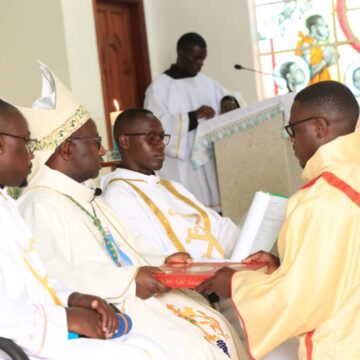

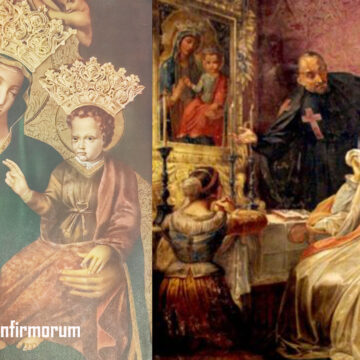
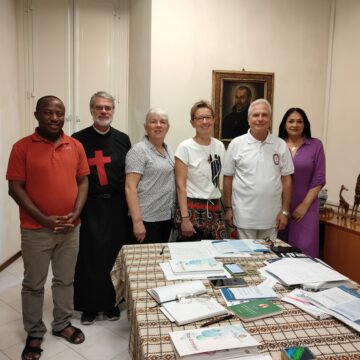

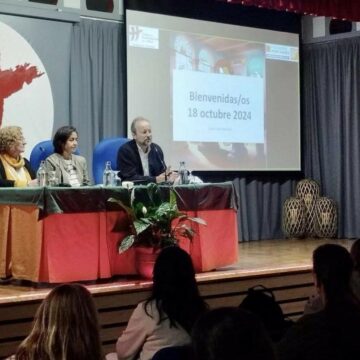
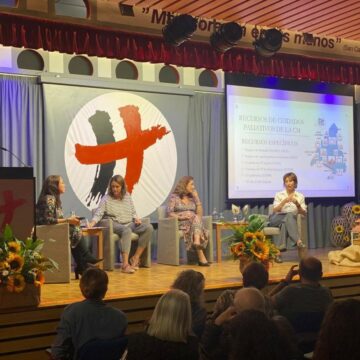
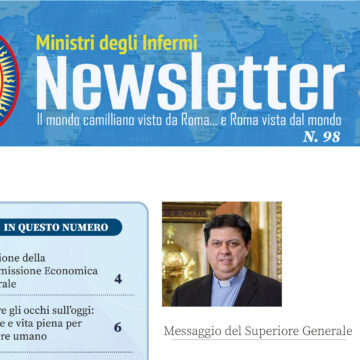
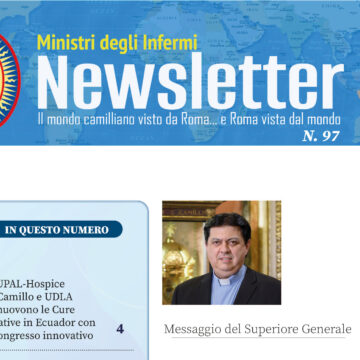
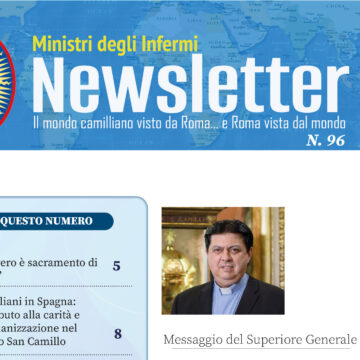
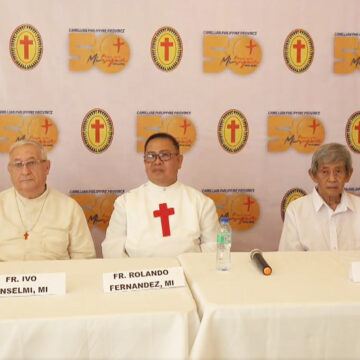
Camillians on Facebook
Camillians on Twitter
Camillians on Instagram